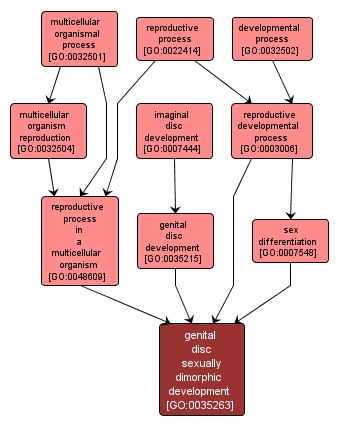| Desc: |
The sex-specific patterns of primoridia growth and differentiation in the genital imaginal disc. The anal primordium of the genital disc develops in both sexes, but depending on the genetic sex gives rise to either male or female analia. Depending on the genetic sex, only one of the two genital primordia develop. In females the female genital primordium develops and gives rise to the female genitalia whereas the male primordium is repressed. Conversely, in males the male genital primordium develops and gives rise to the male genitalia whereas the female genital primordium is repressed. |














